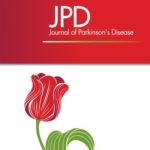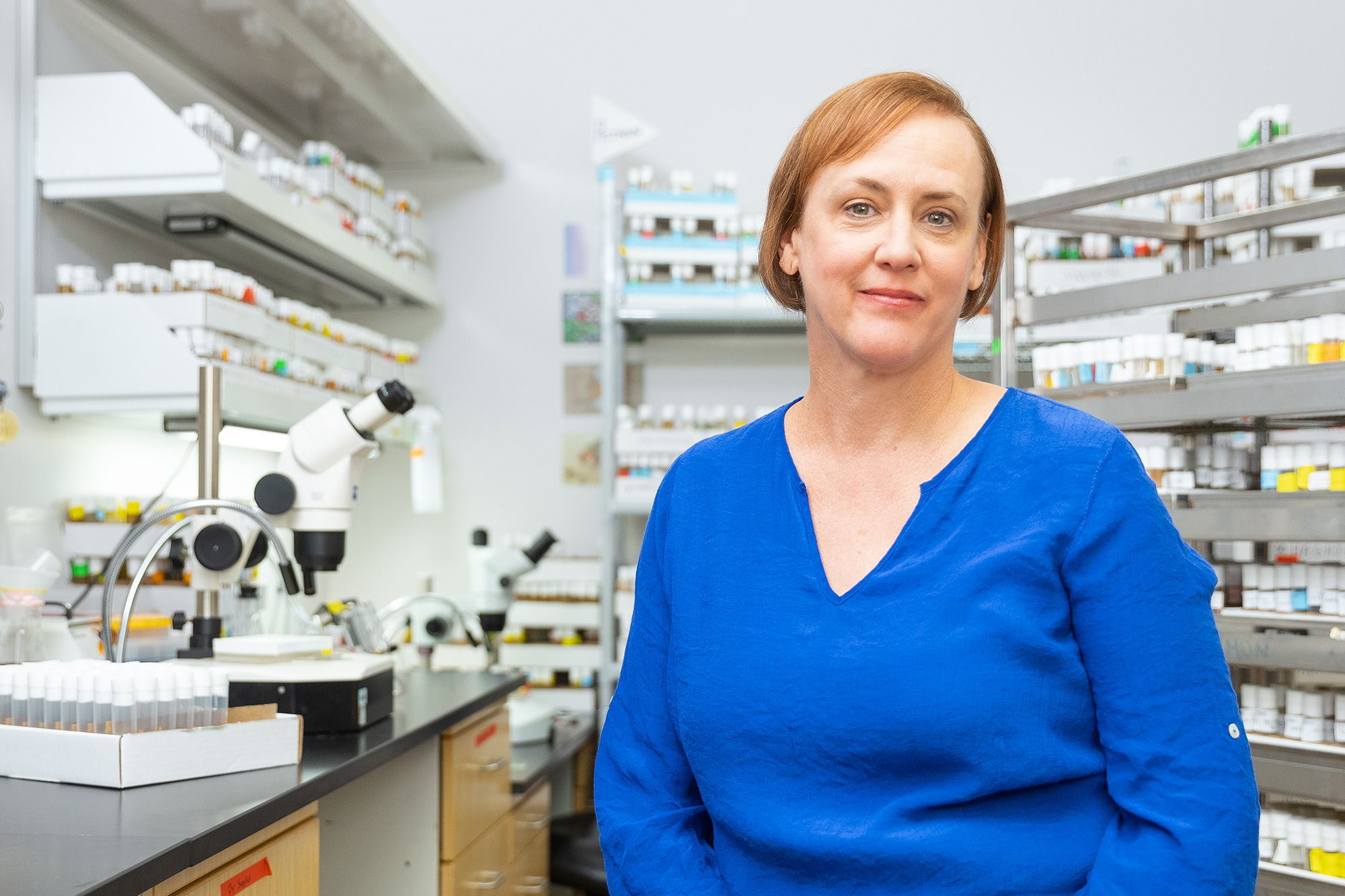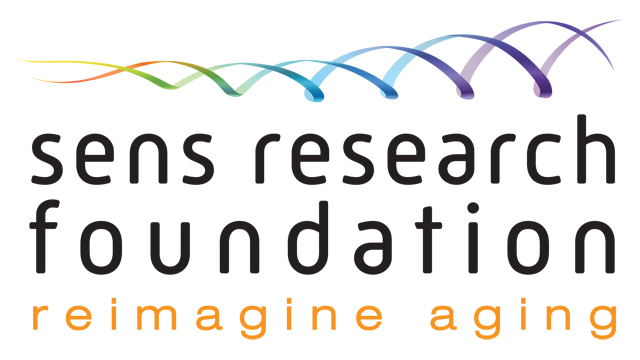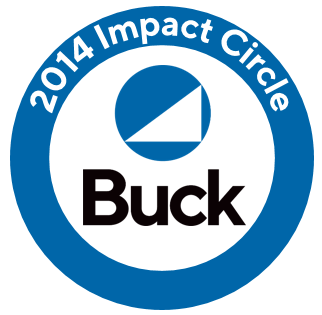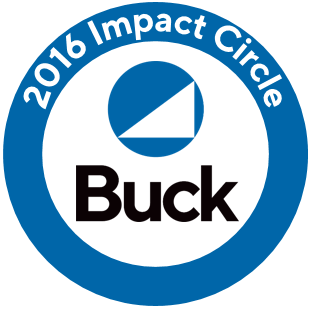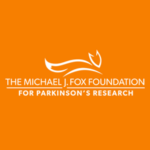ANDERSEN LAB
Lab focus
The Andersen lab concentrates on understanding the underlying age-related processes driving neurodegenerative diseases in order to identify novel therapeutics that slow or prevent them from occurring. These include small molecules that boost the cell’s own ability to remove damaged proteins and other cellular components through a process called autophagy or those capable of removing cells which can inflict damage on healthy neighbors via a process called cellular senescence. We collaborate with other Buck researchers in order to understand the mechanisms involved and to screen and test novel compounds in various preclinical models of disease, including human induced pluripotent stem cells (iPSCs), C. elegans, and mice.
Why it matters
The most predominant neurodegenerative disorders currently afflicting the world population are Alzheimer’s disease and Parkinson’s disease. Most studies to date have concentrated on how these diseases differ. This “isolationist” approach has yielded few, if any, effective treatments for either disease. Aging is the major risk factor for both. The aging process itself is associated with cellular changes in the brain that likely drive functional deficits in cognition and motor movement. We believe that focusing on what these disorders have in common — the aging brain — will open up novel avenues for disease prevention, amelioration, and cures.
The Buck’s focus on aging as the common risk factor for chronic disease – including neurodegenerative diseases – takes research out of ‘silos’ and increases the odds of developing new therapeutics for these devastating conditions.
Julie Andersen, PhD
CENTER DETAILS
Dr. Andersen received her PhD from the Department of Biological Chemistry in the David Geffen School of Medicine at the University of California, Los Angeles. She received additional research training in the Department of Neurogenetics at Massachusetts General Hospital in Boston. Prior to arriving at the Buck Institute, Dr. Andersen held a faculty position in the School of Gerontology at the University of Southern California.
Dr. Andersen has published more than 170 scientific papers and holds three current patents. She has been recognized for her research with a Parkinson’s Pioneer Award from the National Parkinson’s Foundation, a Glenn Award for Research in Biological Mechanisms of Aging, and a senior scholarship from the Ellison Medical Foundation. She was elected a fellow of the Society for Free Radicals in Biology and Medicine in 2013. She currently serves on the scientific advisory board for the University of Pittsburgh Medical Center’s Biology of Aging Program, on the editorial board of e-Neuro (Journal of Neuroscience’s e-journal), as a member of the Brookdale Institute on Aging, and as a council member for the Society of Neurotoxicity. Dr. Andersen has extensive experience working with both biotech companies and medical foundations, including Roche, the Michael J. Fox Foundation, the National Parkinson’s Disease Foundation, and the American Parkinson’s Disease Foundation.
-
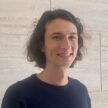 Nicholas Bergo Research Assistant
Nicholas Bergo Research AssistantNick Bergo recently joined the Andersen Lab in July 2023. He received his bachelor’s degree from UC Santa Barbara in biochemistry, molecular biology and spent two years in the biotech industry working for Harpoon Therapeutics, a clinical stage immunotherapy company, and Lycia Therapeutics, a preclinical stage company pioneering therapeutics for extracellular protein degradation, where he assisted with the cloning and expression of biologics to support ongoing drug discovery and development programs at both companies.
NBergo@buckinstitute.org
-
 Manish Chamoli, PhD Research Scientist, Larry L. Hillblom Fellow
Manish Chamoli, PhD Research Scientist, Larry L. Hillblom FellowManish obtained his five-year integrated master’s degree in biotechnology in 2009 and then joined the PhD program in aging biology at the National Institute of Immunology in India. His PhD work was focused on understanding molecular pathways mediating dietary restriction–induced longevity using the C. elegans model. His research was supported by a fellowship from the government of India’s Department of Biotechnology. After completing his PhD in 2015, Manish joined the Lithgow lab as a postdoctoral fellow. Currently he is working in collaboration with the Andersen lab to understand the role of autophagy in aging and age-related neurodegeneration, utilizing novel pharmacological agents. He is supported by a three-year postdoctoral fellowship from the Larry L. Hillblom Foundation.
MChamoli@buckinstitute.org
-
 Shankar Chinta, PhD Visiting Scientist
Shankar Chinta, PhD Visiting ScientistShankar Chinta earned his Ph.D. in neurochemistry from NIMHANS, India. As a postdoctoral fellow at Buck Institute, he investigated the molecular mechanisms contributing to cell death in Parkinson's disease, utilizing innovative transgenic mouse models developed in Dr. Andersen's laboratory. Currently, Shankar holds a faculty position at the College of Osteopathic Medicine at Touro University California and serves as a visiting scientist at the Buck Institute. His current research focuses on unraveling the intricate relationship between inflammation and the onset and progression of age-associated neurodegenerative diseases, with a primary emphasis on Alzheimer's disease (AD).
SChinta@buckinstitute.org
-
 Varunya Kattunga Research Associate
Varunya Kattunga Research AssociateVarunya completed her Bachelor's degree in microbiology at UC Santa Barbara before pursuing a Master's in biomedical science at Charles R. Drew University. Her research at CDU focused on investigating the effects of novel small molecule drugs in triple-negative breast cancer, work that earned recognition through an American Cancer Society Grant. With a dedicated commitment to addressing health disparities and promoting equity through research and science, she approaches every project with passion and purpose.
VKattunga@buckinstitute.org
-
 Alexander Kifle Research Associate
Alexander Kifle Research AssociateAlex is from the North Bay, born and raised in Santa Rosa, CA. He attended Santa Rosa Junior College before transferring to UC Davis. Although Pre-Med, Alex received a degree in economics due to his passion for mathematics and learning about how the world functions. In the Summer of 2022, after nearing completion of a Postbacc, Alex began an internship in the Andersen lab at the Buck Institute under Dr. Georgia Woods. After the internship, he accepted a position as a Research Associate in the Andersen lab. By primarily focusing on immunohistochemistry, Alex studies the effects of Urolithin A on Alzheimer’s Disease and the 3xTg Mouse Model. Alex hopes to gain valuable experience from his research before applying to medical school in Spring of 2024. In his free time, Alex enjoys watching and playing sports, including his new obsession, golf.
AKifle@buckinstitute.org
-
 Suckwon Lee Research Associate
Suckwon Lee Research AssociateSuckwon Lee was born and raised in Seoul, Korea. Suckwon attended University of California, Davis where he got his degree of bachelor of science in biochemistry & molecular biology and departmental citation. After graduating from Davis, he wanted to broaden his skill set. His graduation from Cornell University in Masters of chemistry & chemical biology has made him equip chemical techniques more deeply than before. Following his all studies, he plans to use all the techniques and knowledge for his own unique research, related to aging.
SLee@buckinstitute.org
-
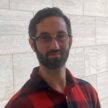 Zachary Mayeri Research Associate
Zachary Mayeri Research AssociateHaving previously worked for Professor Daniela Kaufer on a disease model for age related memory loss and Alzheimer’s Disease at UC Berkeley, Zachary is excited to join Professor Julie Andersen and her staff. They aim to study the cellular mechanisms of aging with a focus on the pathways involved with mitochondrial dysfunction and its relationship to neurodegenerative disease. In his free time Zachary likes to exercise, go on hikes, attend live music concerts and engage with other scientists.
zmayeri@buckinstitute.org
-
 Shona A. Mookerjee, PhD Research Scientist
Shona A. Mookerjee, PhD Research ScientistDr. Mookerjee received her PhD in molecular genetics from the University of Rochester. She trained as a postdoctoral fellow at the Buck Institute until 2013, when she took a faculty position at Touro University California and an adjunct faculty position at the Buck Institute. She teaches in the Department of Biological and Pharmaceutical Sciences at Touro and conducted research in the Brand lab, where she also trained undergraduate and graduate students. Her work is focused on understanding the energetic budgeting of cells and the ways in which energy production and consumption affect cellular behavior in health, disease, and aging. Current projects include the role of ATP production in cellular differentiation and transformation and the characterization of the pathways that consume ATP during these processes. Dr. Mookerjee is also a lecturer in the Bioenergetics Master Class led by David Nicholls and Martin Brand.
SMookerjee@buckinstitute.org
-
 Anand Rane Lab Manager & Senior Research Associate
Anand Rane Lab Manager & Senior Research AssociateAnand is from Mumbai, India, and received a master’s degree in biomedical sciences from Louisiana Tech University. He has been involved in basic scientific research in the Andersen lab over the past 12 years and has been working to understand the neuropathology underlying Parkinson’s disease to uncover both novel treatments and cures for the disorder. He is the co-author of 22 publications. Anand’s most recent independent research project involved identifying inhibition of the heat shock protein co-chaperone p23 as a novel therapeutic target for Parkinson’s disease.
ARane@buckinstitute.org
-
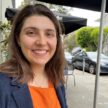 Minna Schmidt Postdoctoral Research Fellow
Minna Schmidt Postdoctoral Research FellowMinna attended Brandeis University, where she received a bachelor’s degree with honors in chemical biology in 2013. She subsequently completed her master’s degree in chemistry at the University of California, Santa Cruz, in 2015, as well as received her PhD from the joint Buck-USC Biology of Aging program in 2021. Minna’s current focus involves the study of exercise mechanisms in effecting changes to alpha-synuclein protein aggregation, a neuropathological hallmark of PD, by utilizing cell culture and C. elegans worm models.
MSchmidt@buckinstitute.org
-
 Shikha Shukla, PhD Postdoctoral Research Fellow
Shikha Shukla, PhD Postdoctoral Research FellowShikha pursued her graduate and postgraduate degree from the University of Lucknow, India, and then joined a Ph.D. program in the Department of Neuroscience and Ageing Biology at Central Drug Research Institute, India. In her Ph.D. work, she delved into the interplay of reproductive senescence, ageing, and neurological ailments employing C. elegans as a model system. Her research was supported by a fellowship from the University Grants Commission of India. After the completion of her PhD in 2020, she did a one-year research project at ULB, Belgium where she studied about a phosphatase PPRP-1 and its role in synaptic vesicle recycling. In 2022 she joined Dr Lithgow and Dr Anderson’s lab as a joint post-doctoral fellow. She is currently working on a natural compound UA (Urolithin A) and its implications on mitochondrial health vis-à-vis ageing.
SShukla@buckinstitute.org
-
 Cynthia Siebrand PhD Student, USC-Buck Biology of Aging Program
Cynthia Siebrand PhD Student, USC-Buck Biology of Aging ProgramCynthia holds a bachelor's degree in Pharmaceutical Sciences and a master's degree in Drug Innovation from Utrecht University, the Netherlands. Her research experience includes studying DNA damage and the unfolded protein response in aging, nutrient sensing and longevity, and phospholipid remodeling pathways in neural stem cells during aging. She worked as a research associate at UCSF, focusing on immune evasion of senescent cells. Cynthia is currently pursuing a Ph.D. in the biology of aging at the USC-Buck joint program, aiming to develop innovative therapies for neurodegenerative diseases.
CSiebrand@buckinstitute.org
-
 Chaska Walton, PhD Research Scientist
Chaska Walton, PhD Research ScientistChaska received his bachelor’s degree in psychology from the University of Barcelona, Spain, in 2013. He then did a Master in Neuroscience while working as a research intern at the department of Psychobiology at the University of Barcelona, where he studied cognitive enhancement by glutamatergic receptor modulator compounds in rat models of aging. He continued his education at the CSIC/Autonomous University of Madrid, Spain, where he completed his PhD in molecular bioscience in 2018, investigating neuronal cell division in mouse long-term primary neurons.
CWalton@buckinstitute.org
One of the interests of the lab lays in studying how different Aβ aggregates can induce cellular senescence in brain cells. In the video, a 3D reconstruction of immunocytochemistry for neuron marker (MAP2, violet), astrocyte marker (GFAP, green), and amyloid beta markers for oligomers A11 (turquoise) as well as monomers, oligomers, protofibrils, and mature fibrils MOAB2 (red).
Amyloid beta (Aβ) is a fragment of the amyloid precursor protein (APP) and is the major constituent of senile plaques, one of the hallmarks of Alzheimer’s disease (AD), as well as other toxic aggregates such as oligomers and protofibrils. Aβ aggregates are thought to trigger a cascade of events that lead to clinical AD years to decades after they first appear. How this cascade works is still a mystery to science and understanding it may hold the key to stopping AD. At the Andersen lab we think Aβ aggregates trigger a process called cellular senescence. Cellular senescence is routinely studied outside the brain as an oncosuppressive mechanism. When unchecked, cellular senescence is thought to be a driver of aging and age-related disease. Unlike the vast majority of organs, the brain is not equipped to resolve cellular senescence, making it susceptible to the accumulation of senescent cells for years. At the Andersen lab we are researching a cellular senescence as a normal physiological process taking place in the wrong place: a “a failure in the design” that may ultimately result in AD.
Selected Publications
-
Lee S, Wang EY, Steinberg AB, Walton CC, Chinta SJ, Andersen JK. A guide to senolytic intervention in neurodegenerative disease. Mech Ageing Dev. 2021 Oct 7:111585. doi: 10.1016/j.mad.2021.111585. Online ahead of print.PMID: 34627838
-
Verma DK, Seo BA, Ghosh A, Ma SX, Hernandez-Quijada K, Andersen JK, Ko HS, Kim YH. Alpha-Synuclein Preformed Fibrils Induce Cellular Senescence in Parkinson’s Disease Models. Cells. 2021 Jul 5;10(7):1694. doi: 10.3390/cells10071694.PMID: 34359864
-
Schmidt MY, Chamoli M, Lithgow GJ, Andersen JK. Swimming exercise reduces native ⍺-synuclein protein species in a transgenic C. elegans model of Parkinson’s disease. MicroPubl Biol. 2021 Jun 29;2021:10.17912/micropub.biology.000413. doi:10.17912/micropub.biology.000413.PMID: 34222835
- Chinta SJ, Woods G, Demaria M, Rane A, Zou Y, McQuade A, Rajagopalan S, Limbad C, Madden DT, Campisi J, Andersen JK (2018). Cellular senescence is induced by the environmental neurotoxin paraquat and contributes to neuropathology linked to Parkinson’s disease. Cell Rep. 22: 930-940.
- Woods G, Andersen JK (2018). Screening method for identifying toxicants capable of inducing astrocyte senescence. Toxicol Sci. doi: 10.1093/toxsci/kfy181. PMCID: PMC6204767.
- Andersen JK (2018). Neurodegeneration. Innovation in Aging. 2018 Nov; 2 (Suppl 1): 745.
- Rane A, Rajagopalan S, Ahuja M, Thomas B, Chinta SJ, Andersen JK (2019). Hsp90 Co-chaperone p23 contributes to dopaminergic mitochondrial stress via stabilization of PHD2: Implications for Parkinson’s disease. Neurotoxicology 65: 166-173.
- Tom S, Rane A, Katewa AS, Chamoli M, Matsumoto RR, Andersen JK, Chinta SJ. (2019). Gedunin Inhibits Oligomeric Aβ1-42-Induced Microglia Activation Via Modulation of Nrf2-NF-κB Signaling. Mol Neurobiol. 56: 7851-7862.
- Walton CC, Begelman D, Nguyen W, Andersen JK (2020) Senescence as an Amyloid Cascade: The Amyloid Senescence Hypothesis. Front Cell Neurosci. 2020 May 19;14:129.
- Chamoli M, Chinta SJ, Andersen JK, Lithgow GJ. (2020) Kavain suppresses Human Aβ-induced Paralysis in C. elegans. MicroPubl Biol.
- Anand N, Holcom A, Broussalian M, Schmidt M, Chinta SJ, Lithgow GJ, Andersen JK*, Chamoli M*. (2020). Dysregulated iron metabolism in C. elegans catp-6/ATP13A2 mutant impairs mitochondrial function. *co-senior authors. Neurobiol. Dis.
- Viel T, Chinta S, Rane A, Chamoli M, Buck H, Andersen JK (2020) Microdose lithium reduces cellular senescence in human astrocytes – a potential pharmacotherapy for COVID-19? Aging. 103449. Volume 12, Issue 11, pp10035-10040.
- Evans DS, O’Leary M, Andersen JK, et al (2021) Longitudinal Functional Study of Murine Aging: A Resource for Future Study Designs. JBMR Plus. Doi: 10.1002/jbm4.10466.
IN THE NEWS

Microdose lithium reduces cellular senescence in human astrocytes - a potential pharmacotherapy for COVID-19?

By disabling a protein in the brain’s blood vessels, researchers ease age-related deterioration in mice
